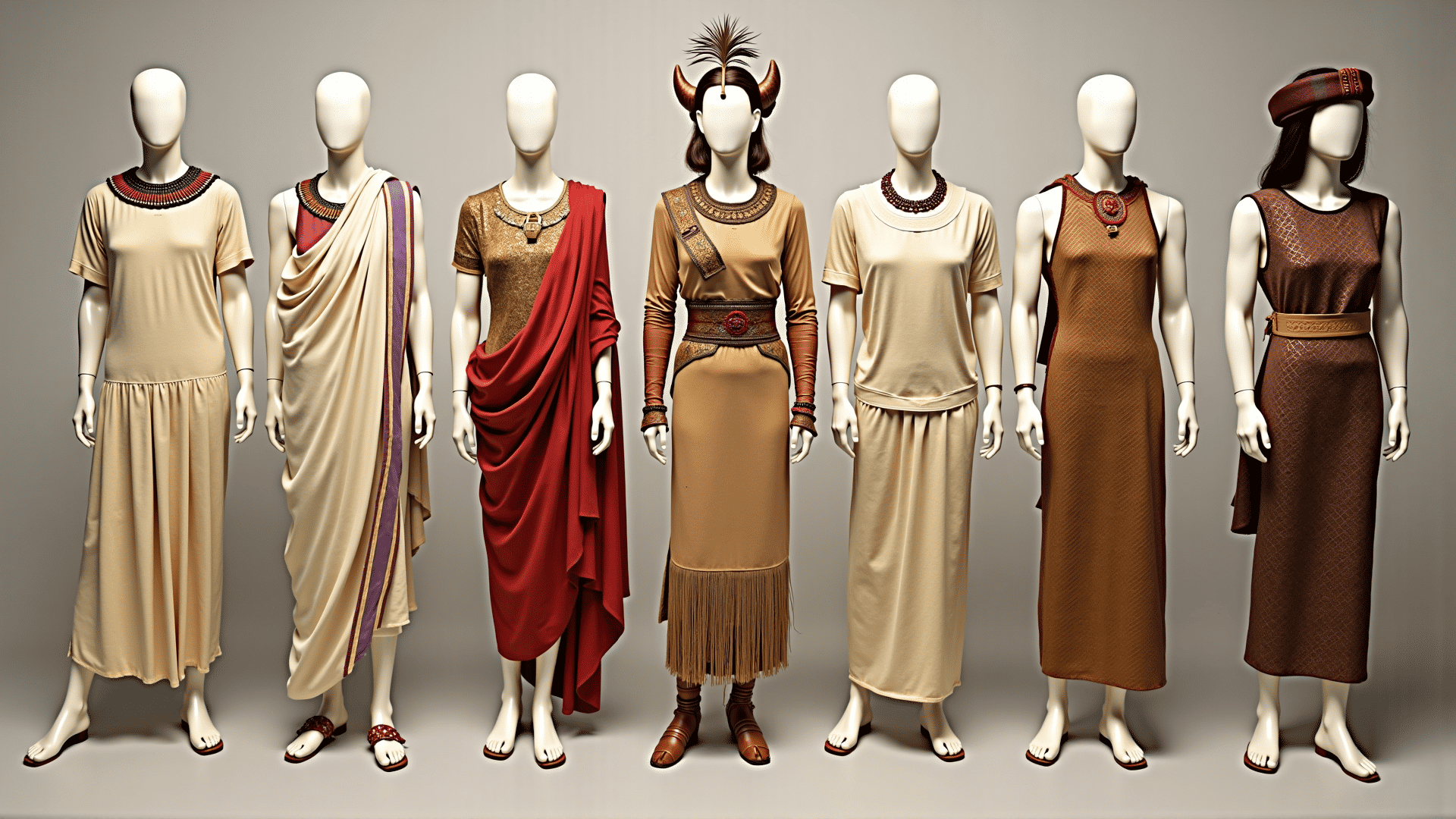In the labyrinth of history, the garments worn by ancient civilizations stand as a testimony to cultural identity, societal values, and technological advancements. Clothing in ancient times was not merely a utility but a canvas upon which societies painted their stories, beliefs, and way of life.
Tracing back to the early Stone Age, animal skins served as the primary attire for warmth and protection. As humans evolved, so did their skills in crafting garments. By the Bronze Age, textiles formed from plant fibers became prevalent, marking a leap in both aesthetic expression and craftsmanship.
Civilizations like the Egyptians took textile artistry to greater heights, utilizing flax to create lightweight linen, suitable for their desert climate. The rich symbolism embroidered into their garments, such as the ankh and eye of Horus, indicated a societal belief system deeply intertwined with mythology and spirituality. Each piece of cloth was more than a covering; it was an embodiment of cultural iconography.
In ancient Mesopotamia, clothing signified status and profession. Woolen textiles were standard, and garments often featured intricate patterns and colors, achieved through mineral dyes. The length and embellishment of tunics suggested one's position in the social hierarchy, illustrating how clothing could serve as a powerful societal indicator.
The Greeks, on the other hand, prided themselves on simplicity and form. Using rectangular pieces of cloth, the Greeks draped their garments in a manner that not only highlighted the human form but also echoed their appreciation for philosophy and rational design. The peplos and chiton were more than garments; they reflected ideals of democracy and societal organization.
In Rome, clothing further evolved with the Toga, a symbol of Roman citizenship. The use of dyed edges or specialized pins differentiated the wearer’s rank and function in society. The Romans, known for their adaptability, borrowed elements from the cultures they encountered, showcasing the dynamic nature of clothing as both identity and diplomacy.
The Silk Road facilitated interactions between distant cultures, bringing silk from China to Europe and altering the textile landscape of ancient societies. Silk, with its sheen and texture, became a symbol of wealth and power, admired across continents for its beauty and rarity.
In ancient China, clothing was another layer of philosophy and practice. Silk, universally recognized, was regarded not merely for its luxury but for its connection to imperial authority. Elaborate designs featuring dragons and clouds symbolized cosmic harmony and balance, rooted in Confucian and Daoist teachings.
These ancient garments, woven from the fibers of nature and culture, depict a vivid tableau of human progress. They illustrate not only how societies dressed but offer insights into their inventions, intercultural exchanges, and intrinsic values. As archaeologists continue to unveil textile fragments, we gain further glimpses into an art form that transcended the loom, narrating the saga of human civilization through its fabric.
